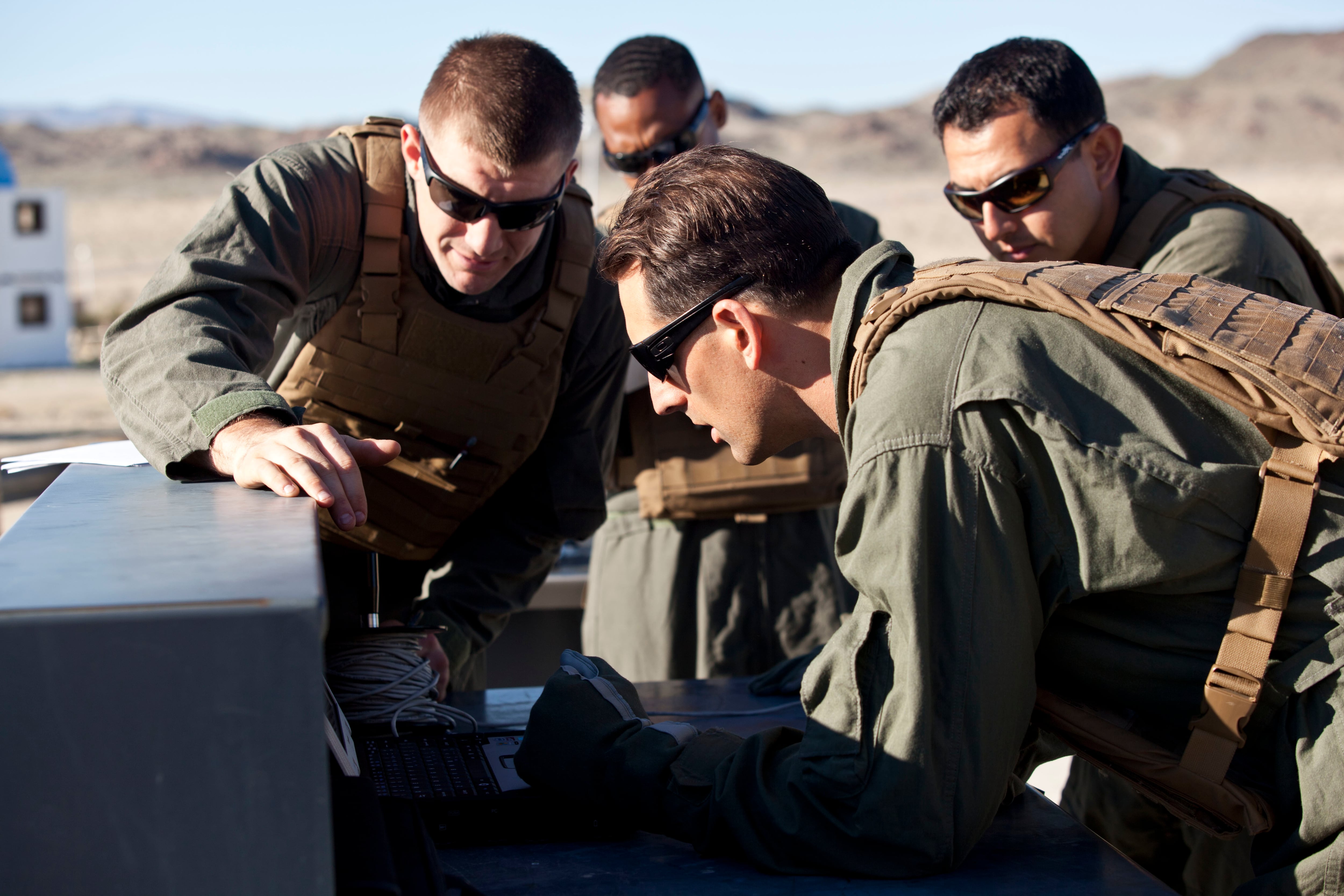Researchers seeking a way to make the radio frequency spectrum visible may not want soldiers donning goggles to view a “psychedelic” scene like an acid rock concert’s laser light show, but they say the product might resemble that image, at least initially.
Much like the overloaded grunt, carrying so much weight that the soldier is rendered ineffective, electronic warriors and bomb experts have overloaded the invisible radio spectrum, often disabling their own capabilities.
Currently, it takes a highly specialized, trained, and in short supply, electronic warfare officer to map out the radio frequency battlespace to find threats and problems using complicated equipment and readings.
Experts at the Joint Improvised-Threat Defeat Organization are calling on industry to help ground troops “see” the invisible spectrum in a way that less trained and less specialized soldiers and Marines can understand.
Dr. William Thissel, an engineer with JIDO, described the hoped-for device at the annual National Defense Industrial Association EOD symposium as trying to create a “more intuitive man-machine” interface for data visualization.
The clutter of equipment both detecting and emitting signals in the radio frequency band on the battlefield is canceling out equipment and making it hard for forces to find the sources of enemy communication or targeting equipment, Thissel said.
A fellow scientist, Dr. Hatcher Tynes, clarified for the audience what the agency didn’t want.
“You’re not going to just slap goggles on your head and see like night vision,” he said.
At least not initially. He and Thissel see the goal to be real-time interpretation and analysis of the radio spectrum in an easy-to-understand visual display.
They want to avoid complicating the problem themselves, though.
“We’re not going to give you a garbage goggle where you’re just going to see psychedelic images like a Jefferson Airplane video,” Tynes said.
The device wouldn’t only troubleshoot offensive capabilities, Tynes said. It also would help EOD techs with such common work as using robots. Bomb-disabling robots have certain specifications for distances they can travel and how they communicate over radio waves.
Often jamming signals or other interference, even from the bomb technician’s own equipment, can limit those capabilities or even disable crucial tools such as Global Positioning System devices.
With the RF-spectrum viewer, the soldier or Marine can quickly find the source of the problem and fix it.
JIDO officials did not specify when the requirements would be added to the existing input request to industry, only saying they were taking feedback and would post the new requirements “soon.”
Todd South has written about crime, courts, government and the military for multiple publications since 2004 and was named a 2014 Pulitzer finalist for a co-written project on witness intimidation. Todd is a Marine veteran of the Iraq War.




